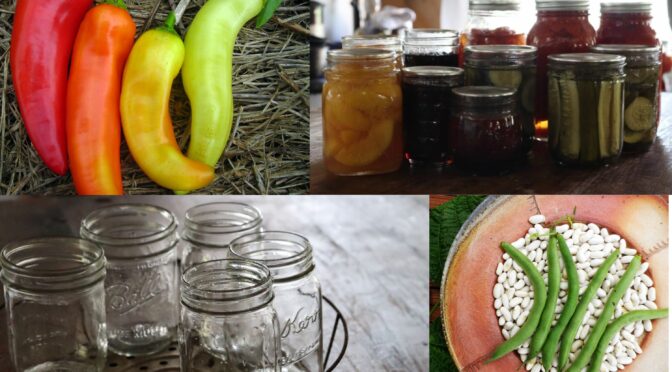Canning is a great way to preserve any surplus harvest from the home garden. While it has lost some popularity to freezing vegetables, canning has the advantage of being shelf stable, an important feature if you live in an area with power outages. Canned vegetables can also help you cut back on your grocery bill and provide ready to go, healthy sides for busy weeknight meals.
Basic Canning Safety
There are two basic types of canning: water bath canning and pressure canning. Water bath canning is very simple. You boil jars of food in a pot of water for a specific length of time depending on the recipe.
The water bath canning method is a great way to get started for beginners. If you’ve cooked spaghetti, you can water bath can. Unfortunately, it’s only safe for “high acid” foods. Most vegetables are low acid. So to make them safe for water bath canning you need to add acidity. You can do this by making pickles, salsa, or relish which require acidic ingredients like vinegar. Other high acid foods include certain tomato products and fruit jams.
While tomatoes were once considered acidic enough to can alone, most modern sources recommend adding lemon juice or citric acid to boost the acidity. Don’t worry, you won’t taste it! Add two tablespoons of bottled lemon juice or 1/2 teaspoon of citric acid per quart of tomatoes. For pints, use one tablespoon bottled lemon juice or 1/4 teaspoon citric acid.
Note that tomato recipes with added vegetables like zucchini, peppers, or beans in vegetable tomato soup may not be acidic enough for water bath canning at all. Always use a tested canning recipe.
Pressure canning is a bit more involved, but is still easier than you’d think. Don’t be intimidated! To pressure can you will need a pressure canner, not a pressure cooker. These aren’t the same product.
Pressure canning allows you to bring your jars of food to a much higher temperature than water bath canning. This kills bacteria and means you can safely can “low acid” foods like sweet corn, green beans, carrots, and lima beans.
Great Crops for Home Canning
Whether you want to try water bath canning for the first time or are an experienced canner looking to fill the pantry with pressure-canned veggies, these are a few of our favorite crops.

Homemade Pickles Cucumber
Specifically developed for home gardeners interest in canning, Homemade Pickles is always a favorite. The vigorous plants have good disease resistance and produce medium green fruits with small white spines. The cukes are are solid and crisp.
Harvest them at 1½ inches or larger, up to 6 inches. Homemade Pickles makes robust bite-sized pickles, slices, or large spears.
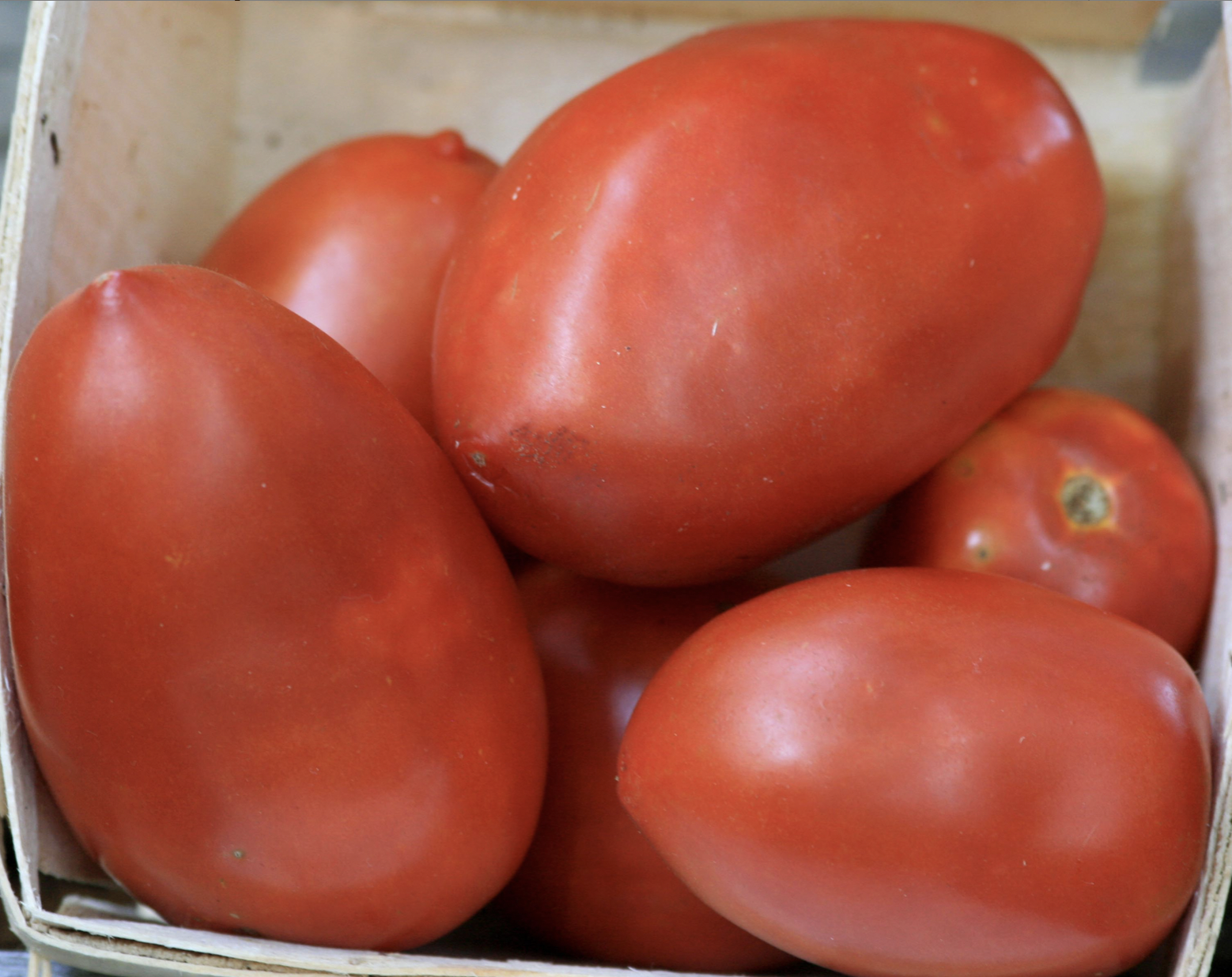
Amish Paste Tomato
Year after year, Amish Paste is one of the most popular canning tomatoes we offer. It’s also one of the largest sauce tomatoes we carry. The tall plants produce heavy yields of coreless fruits weighing up to 12 oz.
Despite the name ‘Amish Paste,’ the juicy fruits are best suited to making sauce.

Blue Lake Bush (Blue Lake 274) Bush Snap Bean
These compact yet productive bush beans are a great choice for small gardens. Blue Lake Bush Beans are productive, disease resistant, and perfect for succession planting. The mostly stringless 6-8 inch pods are perfect for canning or freezing.
If you aren’t interested in pressure canning, these beans also make delicious dilly beans! Dilly bean pickles hold their texture well and are great served alongside burgers at summer cookouts.

Thorogreen (Cangreen Bush) Bush Lima Bean
Thorogreen Bush Lima Beans have wonderful texture, and flavor even when canned. Their concentrated pod set makes them ideal for home growers looking to can or freeze.

Aunt Mary’s Sweet Corn
Aunt Mary’s is an Ohio heirloom that dates back to the 1800s. Throughout the years it’s been passed down from seed savers, persevering its incredible flavor and selecting for canning.
Aunt Mary’s is fairly quick to mature. In just 69 days, it produces stalks of 6 to 8 feet and 1 to 2 ears of 6 to 8 inches long each.

Three Root Grex
This vibrant beet yields roots in two shades of red and one striking orange. The beautiful roots look stunning in a canning jar whether they’re pickled or pressure-canned. Three Root Grex beets are ready to harvest in about 54 days.

Garden Huckleberry
Garden huckleberries are one of the few annual fruits you can add to the garden. They produce heavy yields and are excellent for canning. Use garden huckleberries to prepare wonderful jam, pies, and syrup.

Music Garlic
Garlic is rarely the primary star of a canning recipe, though some folks enjoy pickled garlic. However, it’s a classic ingredient for many canning recipes like salsa, dill pickles, and spaghetti sauce.
Music garlic is one of many great options for canning. Music has a rich, pungent flavor that holds well even when canned perfect for those looking to create flavorful condiments, sauces, and pickles.
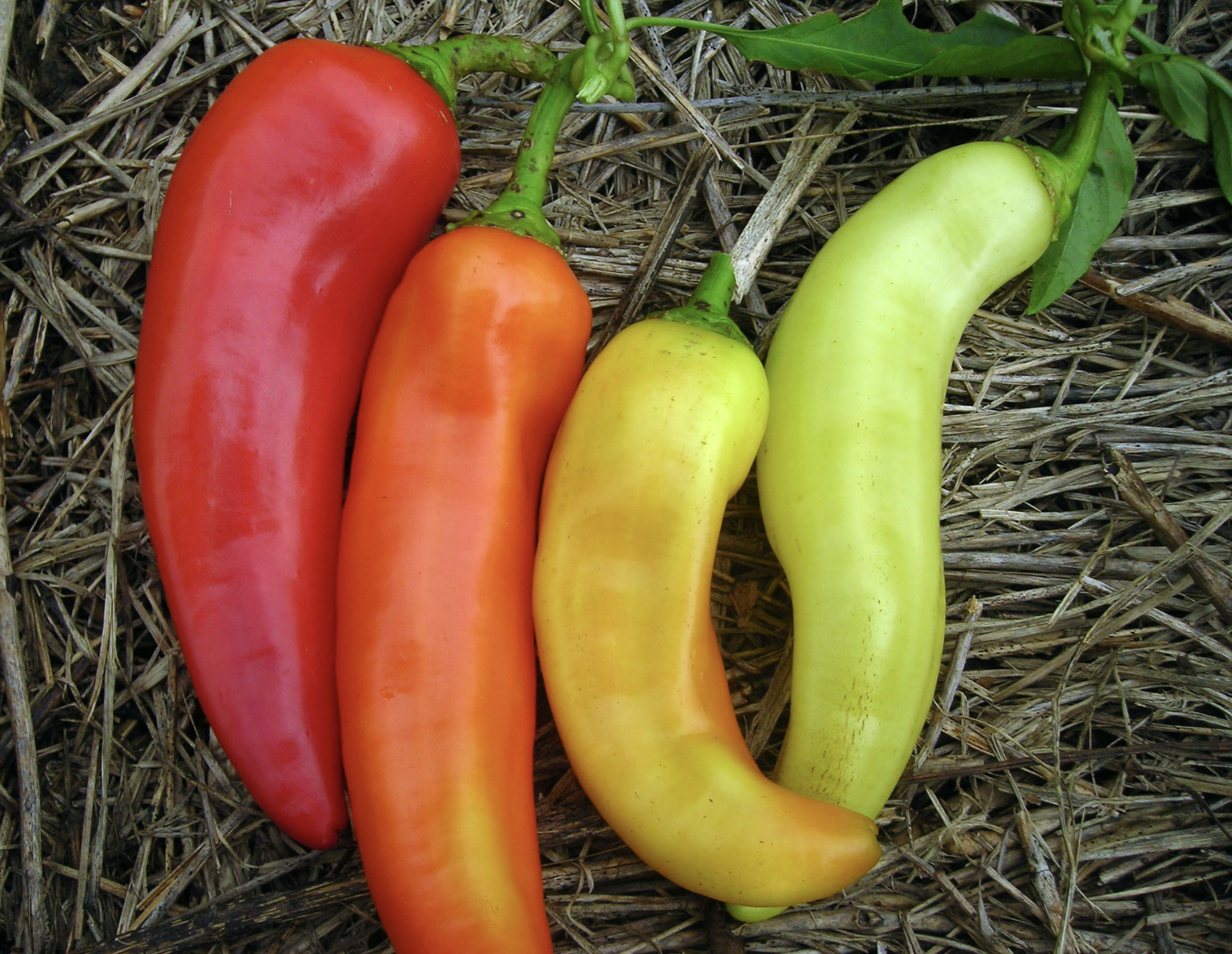
Sweet Banana (Long Sweet Hungarian) Sweet Pepper
These attractive peppers ripen from pale green to yellow to orange to crimson red. You can enjoy them at any stage, but they’re sweetest when fully ripe and red. Picked at the pale green stage, they make the classic pickled banana pepper rings.
Sweet Bananas thrive in the Mid-Atlantic and are highly productive.
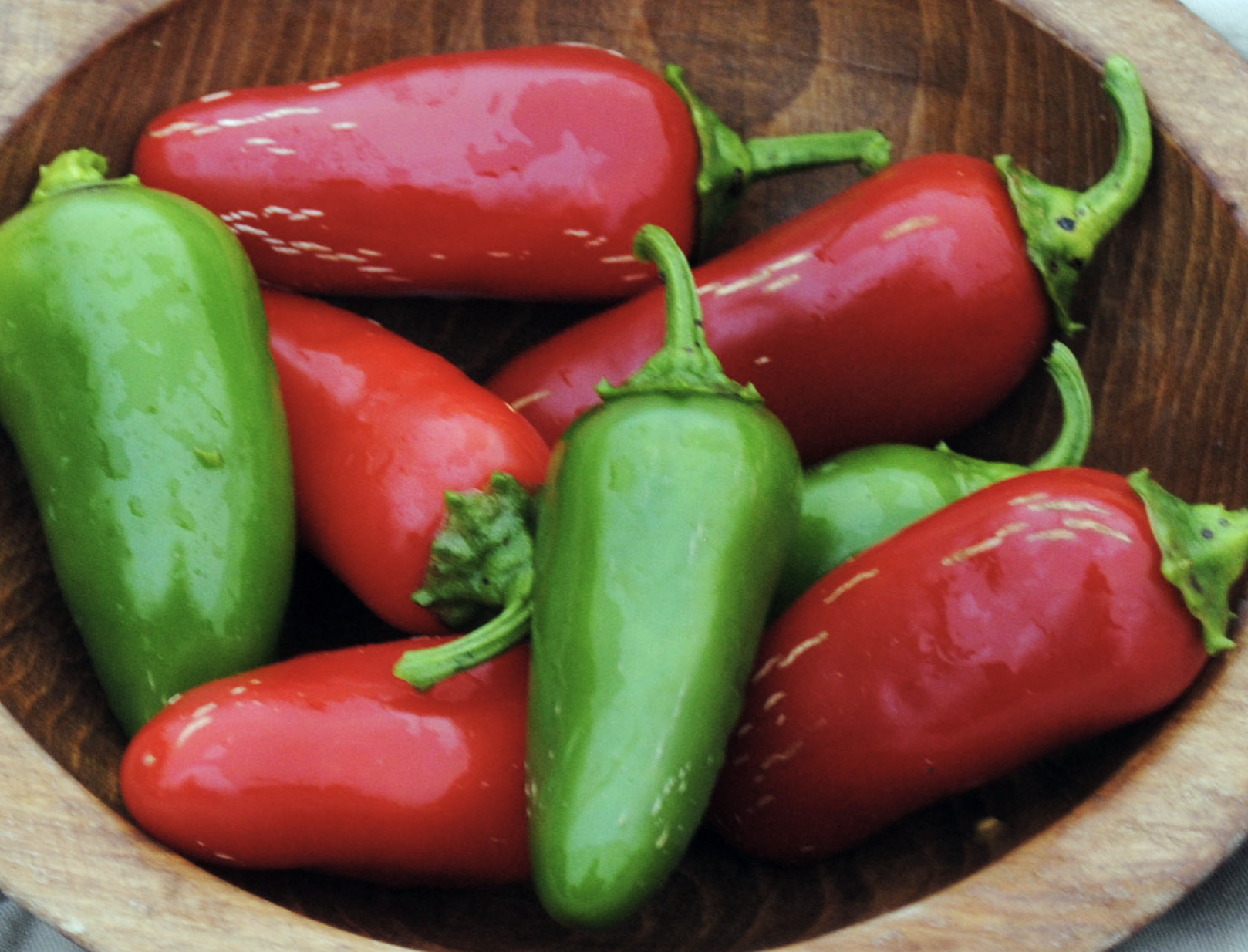
Jalapeños
The classic salsa chile. Jalapeños produce medium-hot 1½ x 2½ in. thick-walled peppers usually harvested green, but can be left to mature to red, or removed from the plants to redden indoors.
Jalapeños are a perfect choice for canning salsa or jalapeño rings for topping nachos, pizzas, and sandwiches.

Chantenay Red Core Carrots
Chantenay Red Core produces blocky, broad-shouldered carrots with blunt tips. Their shape makes them adaptable for clay soils and their small size makes them perfect for canning.
You can pickle carrots, but most folks use them for pressure canning. You can pressure can them alone as a side dish or can them using tested recipes for vegetable soup, beef stew, or other dishes.
These vegetables just scratch the surface. You can use home canning to safely preserve most home-grown vegetables.
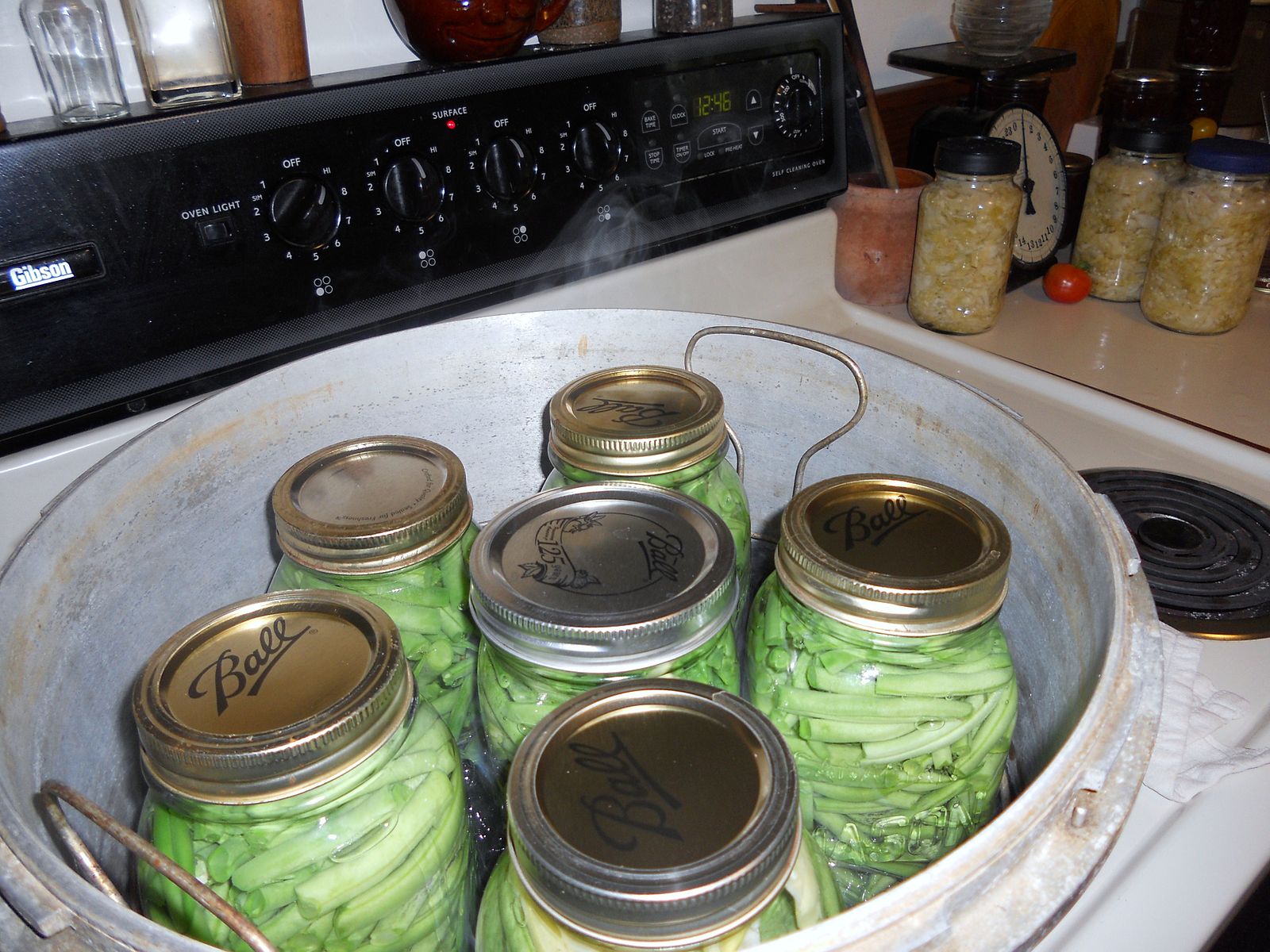
Gandydancer, CC BY-SA 3.0, via Wikimedia Commons
Canning Resources
Canning doesn’t need to be scary, but it is best to use tested recipes from trustworthy resources. Learn basic safety canning rules and your best judgement when looking for new recipes. To get started, here are a few great resources to learn more about canning and find tested recipes.
The National Center for Home Food Preservation
The National Center for Home Food Preservation is your source for current research-based recommendations for most methods of home food preservation. The Center was established with funding from the Cooperative State Research, Education and Extension Service, U.S. Department of Agriculture (CSREES-USDA) to address food safety concerns for those who practice and teach home food preservation and processing methods.
Creative Canning
Created by Ashley Adamant, Creative Canning puts together tons of recipes and safe canning guides. Ashely uses USDA guidelines where appropriate, as well as safe canning guidelines from state extension services, independent testing labs, and other reputable sources like Ball Canning, Bernardin, Mrs. Wages, and Pomona’s Pectin to create and source recipes and advice.
Ball Mason Jars
Ball Mason Jars are one of the most common canning product suppliers in the United States. Their website includes safety guides, canning tips and ideas, and tons of fun recipes.
Bernardin
Bernardin is Canada’s leading supplier of home canning products. Their website is full safe canning education and recipes.
State Extension Services
Most state extension services offer some canning recipes and advice along with their gardening information. Many extension services also offer testing for pressure canners.

